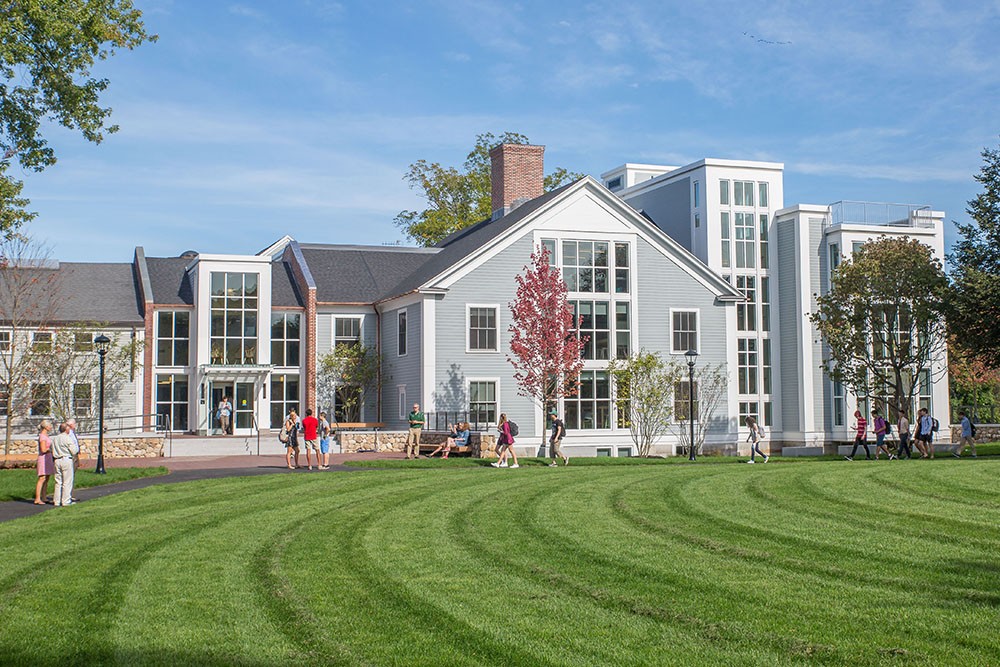- Who We Are
-
Our Work
-
Educational
- Brooks School- George and Evanthea Demoulas Family Boathouse
- Riverbend School - Gym and Schoolhouse
- Lesley University- Animation Studio
- Middlesex School- Bass Arts Pavilion and Danoff Visual Arts Center
- Nashoba Brooks School- Sureau Family Discovery Barn
- The Southport School- Arts and Music Building
- Senior Living
- Hospitality
-
Healthcare
- Partners Urgent Care
- Yale New Haven Health- Medical Office Building
- The Hospital of Central Connecticut - Advanced Wound and Hyperbaric Medicine Center
- Connecticut Children's - Infusion Center and Gastrointestinal Clinic
- Connecticut Children's - Specialty Care Center
- MidState Medical Center- Post-Anesthesia Care Unit Expansion & Renovation
- Commercial
- Specialty Work
-
Educational
- How We Do It
- Our Blog
- Industry Tidbits
- Join Our Family
- Contact Us
Construction Logistics: Minimizing the Impact on a School Campus
November 15th, 2019
A school construction project is exciting and transformative. It can also be noisy and disruptive. When it comes to minimizing an active construction project’s impact on your campus, effectively managing construction logistics is key.
Here are six ways we manage our minimum impact.
1. Blending In
We know how essential it is to maintain your visitor’s first impressions. The campus and facilities are a means to help your students transform and grow. It’s not a place for us to advertise. We won’t paste our company name across construction fencing; we want to blend in not stand out. However, we will have directional signs placed strategically around the campus to lead subcontractors, suppliers and other construction personnel to the job site, because the last thing you need is construction traffic taking the wrong route through your campus.
2. Managing Construction Deliveries
Construction deliveries have the potential to create headaches on your campus, which is why we have you approve the route for all construction traffic and deliveries. When appropriate, we also like to get buy-in from your neighbors to maintain good town-gown relations. For everyone’s benefit, we prefer to use less-travelled roads or temporary roads to access our project, but sometimes this isn’t possible. In those cases, it’s standard for us to prohibit construction deliveries during high traffic times such as drop-off and pick-up. Imagine getting a construction delivery at the same time parents are arriving to drop off their kids for the day? That sounds like a disaster to us too!
All large deliveries must be scheduled with the superintendent in advance or we will turn them away. Unscheduled deliveries may conflict with another scheduled delivery or an onsite activity, such as crane usage or site grading, that makes the delivery unfeasible. We ensure that we have both the space and manpower available to receive and unload any delivery.
3. Working Hours
Noise can also disrupt your school community and surrounding neighbors. It’s important for you to tell us your expectation of working hours for both weekdays and weekends. These hours are noted in subcontractor contracts, during subcontractor orientation and during subcontractor meetings so everyone on site knows what is and is not acceptable.
4. Scheduling around Your Activities
Our Lean Construction planning boards are an easy-to-understand visual that lets everyone see what construction activities are coming up in the next six weeks. This format helps us maintain flexibility to make sure our activities work with your campus schedule. On past projects, we have restricted work to the interior of a building only, stopped work during certain hours and even cancelled regular work days altogether. For example, at a recent K-8 school project, we paused all construction on weekdays during drop-off and pick-up times and during recess because of the jobsite’s proximity to these active student areas. We’re happy to accommodate your activities around our schedule.
5. Space Usage
Our jobsite borders need to remain flexible. Sometimes we need more space and other times we can give back space. Depending on the stage of the project, we may decide not to have a job trailer and move into the building instead, decreasing the amount of space we need. If we have a crane onsite, we may need to ask for more space temporarily to operate it safely. To reduce our physical footprint, we may require the site contractor remove the soils from the site after excavation and bring it back when we need it. We may also require more frequent deliveries of building materials in smaller quantities. Any changes to the job site border will be communicated to you in advance.
6. Maintaining Pathways on Campus
Safely maintaining access and emergency egress to all open buildings on campus is a must. Our logistics plan, construction fencing and delivery routes will take these factors into consideration.
Just as we may need our site borders to remain flexible, you may also want the borders to be flexible. Your pathways and space needs may be different depending on if you’re in the midst of the school year or summer camp season. Or maybe once you’ve lived with our fencing and pathways, you may realize adjustments are necessary to maintain better flow, access or safety.
Keeping a safe and stimulating learning environment is always the priority. We prepare for success and provide service above all else, so you can focus on serving your students.
Contact us to learn how we can add value and service to your next construction project.
Read about more strategies we use to keep you safe.










